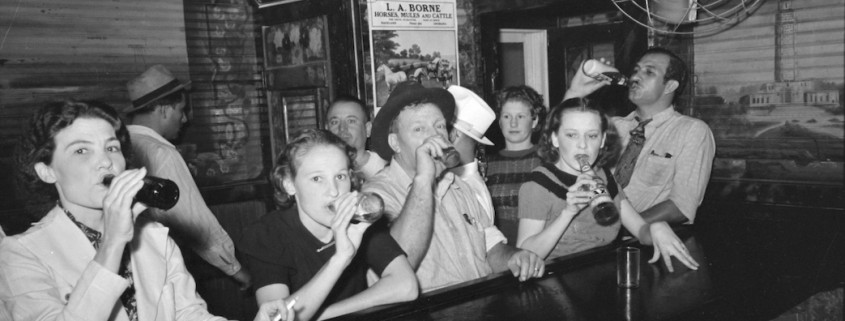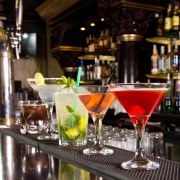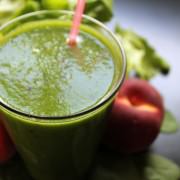5 Simple Steps to Modernize Your Bar Program
There has been a revolution in the past decade. Diners and drinkers are now more in control of what they consume than twenty years ago. Whichever the buzzword may be – gluten-free diet, craft drinker, scratch cooking – the culture has collectively raised its expectations on what it wants from bars and restaurants. In 2016, there is no reason your bar should feel dated. There are few practical tweaks to your beverage program that will make it fresh and vibrant again. No, you don’t have to call your bartenders mixologists. Honestly, you shouldn’t. And you don’t have to reinvent the martini. You just need to take a few simple steps that show commitment to a good program.
In-House Ingredients
Fresh Juice

Juice by hand. Or speed the process up with a electric juicer.
The biggest change in the past 10 years, as far as bar ingredients go, is a simple one. Bartenders have swapped out the supernatural colors of saccharine pre-mixes like sweet and sour mix for fresh juice. The change seems slight. But the impact is enormous.
Fresh juice taste better. Lemons or limes juiced in house are more crisp. They are refreshing. They turn a drink once muddied by too much sugar into a bright, sharp cocktail. There is no real comparison between fresh juice and a pre-mix. (Save for one’s preference in a Gimlet). Fresh juice makes a better tasting cocktail.
The good news is it is easy to utilize fresh citrus in your bar. Depending on the size and depth of your cocktail program, you can probably get away with only having fresh lemon and lime juice. Though grapefruit or orange juice is always useful.
This is an area where the bar and kitchen can work together. Your kitchen is probably already using fresh juice as an ingredient. Have your prep cooks make an extra batch for bar use. If not, your bar back or opening bartender should be juicing.
If juicing in-house seems too intensive, then check with your local grocery store to see if they serve fresh juices. Many stores will juice to order for bars and restaurants.
Just remember, with any juice, maintaining freshness is key. You should always date the juice on the day you make it.
Digital beverage menus can increase your cocktail sales. Find out more about how Uncorkd’s iPad drink menus can boost your beverage sales.
Simple Syrup
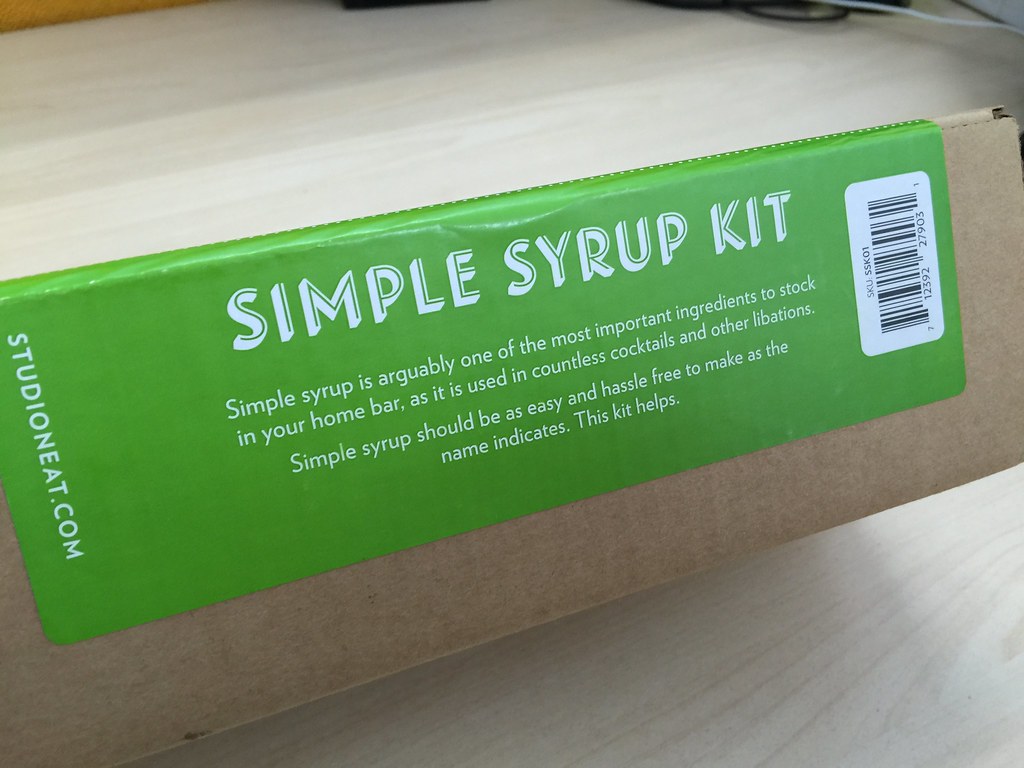
Trust me. It’s so simple to make, you won’t need a kit.
Making simple syrup in the bar is, well, simple. It’s just combining hot water and sugar. You can use white sugar to make a clear syrup. Or demerara sugar for a darker syrup with notes of molasses. Trust me, the best old fashioned you’ll have make is one with demerara sugar.
These syrups are also great for infusing other flavors into by cooking it down with fruits or spices. It’s a cost effective way to elevate your bar and cocktail program.
Garnishes

The cherry on top should be a natural color. Not food coloring.
A variety of fresh garnishes
Along with fresh juices, fresh garnishes are a must. Not only is it a service to your patrons to have fresh lemons and limes for garnish, it can be a beautiful visual component to your bar. Think of how attractive the bright green leaves of fresh basil or mint look on a bar top.
The visual is also a signal that your bar takes its craft seriously. And that patrons can expect quality service and ingredients. It will also indicate the quality of your kitchen.
But make sure you keep garnishes fresh at all times. There are few simple additions and procedures to make sure your bar garnish tray passes inspection.
- Toss old citrus. Keep it fresh during service and store properly at night.
- Keep olives cold and soaked in juice. No one likes a dry, room-temperature olive in their martini.
- Ditch the bright red maraschino cherries. Reserve those for ice cream sundaes. Keep bourbon or Luxardo soaked cherries on hand for manhattans instead.
- Add a few bright greens like basil or mint. Nothing beats a mojito with fresh mint.
- Keep whole fruits on the bar for garnishing with peels. Oranges, lemons, limes, grapefruits. Zesting fresh fruit adds great aromatics and theatrics for guests.
Glassware
The right beer needs the right glass.
Glassware is often an overlooked element of a beverage program. But it shouldn’t be.
The proper glasses can serve multiple purposes. The tone of your beverage program can be set by the glassware. For a more relaxed atmosphere, try serving wine in stemless glasses, instead of more formal stemmed wine glasses.
If your bar is promoting its craft beer selection, get the proper glassware for your beers. Lagers should be served in tall, thin, cylindrical glasses. Heavier beers like stouts or Belgian tripels should be served in a snifter or stemmed tulip glasses.
Proper glassware improves your level of service, and creates a cool experience for your guests.
Batched Cocktails
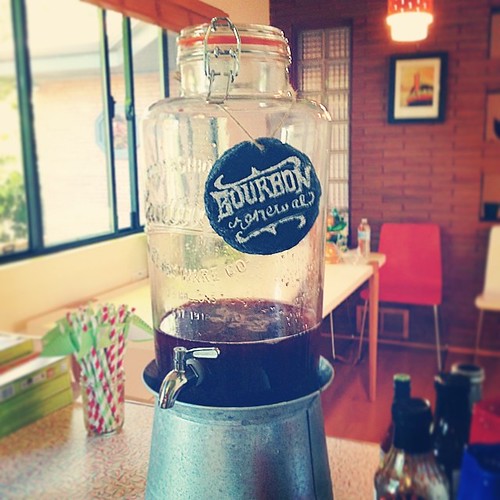
Batch it up. Fast. Consistent. And a cool visual.
Not every bar should be a cocktail bar. Nor should a restaurant forgo timely service in favor of exotic or complex cocktails. But a good cocktail program doesn’t have to be inefficient. Your staff should be of high quality and well trained, but they also shouldn’t be at the mercy of 6-touch cocktails that take too long to make.
An efficient way to run a cocktail program with unique flavors and ingredients is to pre-batch cocktails before service.
Simply pre-batch all of a cocktail’s ingredients, except for any citrus or perishable items.
This benefits your bar and your guests in many ways.
- Allows bartenders make drinks faster
- Maintains consistency in complex cocktails during peak service
- Still allows for bartenders to shake, stir, and mix drinks in front of guests.
Service
Good service doesn’t require a bowtie.
A key to any good restaurant or bar is service. There are a few basic qualities a good staff member should possess:
- Friendly Demeanor
- Knowledge
- Organization
That is a short list. But these are the foundations of good service.
Service should be friendly in how guests or members are greeted and treated.
Service should be organized in every way. From how a server runs their section, to a kitchen’s mis en place. Everything in its right place.
Having a knowledgeable staff is something very important to a modern restaurant. Diners today have a greater knowledge of food and beverages than ever before. The proliferation of information on the internet, food programing on television, and the critical atmosphere fostered by third-party review sites like yelp, all make the knowledge of your staff more important. You cannot rely on a smile in today’s culinary world. Though one certainly helps.
A useful way to train staff on your beverage program is with digital menus. iPad menus provide space for tasting notes, beer information, and cocktail photos. They have become a great resource for training staff, and educating customers.
When it comes to your beverage program, your staff must be able to make intelligent wine suggestions based of taste and food pairings.
Bartenders should have knowledge of cocktails outside of the ones offered on the menu. Classic cocktails should provide a base for bartender knowledge.
Staff knowledge on beer styles, production info, and ABV is very important as well.
As consumers’ preferences change and grow, there are more viable options in the beverage world. Good service means helping your guests navigate those options in a friendly and efficient way.
- 5 Fall Cocktails to Capture the Flavors of Autumn - September 26, 2018
- How Restaurants Can Ignore Sales and Increase Profits - May 9, 2018
- 2018 Spring Wine Trends - April 18, 2018

